Training Classes
Learn what Law-Tech Consultants can do
for your department or agency.
01
Law
Enforcement
|
Our training saves you time and tuition costs by combining Forensic Behavioral Analysis (nonverbals) training with Forensic Statement Analysis training (not handwriting analysis), into one 3 day course while simultaneously adding two powerful tools to your investigative toolkit.
Law enforcement everywhere is finding the demand for services are aggressively on the rise and available resources including personnel and funding on the steady decline. This new age of heightened security unrest coupled with threats of violence and terrorist attacks calls for unprecedented changes in investigative techniques.
Law enforcement continues to experience an ever increasing and aggressive demand for service that are too commonly met with a decrease in personnel, training and equipment. The two areas affected most by these concerns are an increase in officer safety issues followed by unsolved investigations.
This era of heightened security and unrest results from threats, acts of violence and terror attacks that call for changes in investigative tactics. The old adage of working “smarter and not harder” has never been more applicable than today. Law-Tech Consultants provides you the unique ability to keep better pace with those demands in three forms of service: training, consulting and investigations.
The unique interview and interrogation training is specifically designed for patrol and other investigators regardless of tenure, experience or assignment. A recent attendee credited the training for having saved his life by discovering a loaded handgun on a traffic stop (see testimonial pages).
Learn the latest technique of detecting truth and deception through Forensic Statement Analysis. The training is fast paced, engaging and motivational and can be modified to meet your needs. Satisfaction is guaranteed.
As an added service offered, to ensure your success, we provide FREE lifetime support (a $775 value), to all of our attendees, to assist in perfecting the tools learned in class.
As a certified and licensed investigative firm through the Maryland State Police, Law-Tech offers a myriad of services. They include expert testimony, forensic statement analysis, consulting, and private investigations.

02
Interview & Interrogation
|
"The increased knowledge of verbal and non-verbal communication, along with statement review, assisted in the completion of several investigations. In addition to the most significant crimes, our officers report an increase in drug related apprehensions, which resulted from traffic/pedestrian contacts."
Jefferson County Sheriff's Department
How often have you asked a question that left you suspecting the person was being untruthful?
Well those days have come to an end! Studies find that while the majority of people do not lie, they instead choose to omit information. This is more commonly referred to as “Lies of Omission”. In response to avoiding those direct lies, the “fight or flight” syndrome causes them to display involuntary signs of non-verbal body language that is oftentimes accompanied by tell-tale signs such as “Evasive Verbal Responses” (EVR’s).
These and many other clues of deception are easily identifiable if you know what to look for and to ask the right questions! Among many other new concepts you will also be introduced to the latest form of detecting deception through the analysis of verbal and written words. This analysis is found to be so effective that it is used in witness and suspect statements, transcribed testimonies, court reports, news articles, verbal interviews, personal notes and much more.
In many cases a person’s own words can be easily transposed into numbers to determine a truthful, balanced statement. Because these clues are given unknowingly, they are only visible to the trained interviewer.
This fast paced, dynamic seminar is assured to keep even the most seasoned interviewer motivated and interested. You will learn how to develop an interview plan, how to identify and defuse denials, ask questions designed to induce a reaction, objectively judge the response, recognize where and when the suspect is vulnerable, and most importantly, the effective use of the VERBAL LIE DETECTOR!
Learn to disregard those traditional, ambiguous clues and hunches of suspected deception. Instead, put the person to the test with ONE question as you evaluate their response including involuntary eye, hand and leg movements without them realizing it. Use the “3 Strike Rule” to either clear the truthful person or to confirm their guilt.
Learn the power of the “no” response and how it is avoided by the liar at all costs. Learn to evaluate candid photographs and identify a close or distant relationship that could provide warning signals to problems for your business and/or personal life.
Use these behavioral skills to make you a better negotiator. Analyze factual statements of Susan Smith and JonBenét Ramsey cases. Receive your personal copy of the handout manual with which to follow the presentation and for future reference. Experience the reality of these many techniques as you view actual recorded interview sessions. Statement Analysis will enable you to uncover deception of all types and amazingly, the subject doesn’t even have to be present!
You can use these tools to quickly target suspects, detect motivation, identify sensitive subject matter, uncover false claims and most importantly, recognize the truth. Do you think these techniques could assist you at work or at home? Thousands of attendees think so and are reaping the rewards every day and so can you! If you are asking yourself who should attend this type of training, the answer is . . . only those with a need to know the truth!
So what makes this seminar different from other Interview & Interrogation seminars?
That’s simple. The others focus their seminars towards one of two critical topics, Forensic Statement Analysis (FSA) or Behavioral Analysis (BA) . . . not both.
By attending our seminar you benefit by receiving 2 seminars in one! We better prepare you to conduct interviews and interrogations by teaching both FSA and Behavioral analysis. In short, you will be avoiding approximately 24 hours of additional training and saving money! Still not convinced? Read our testimonials here and sign up TODAY!
Past Attendees Include
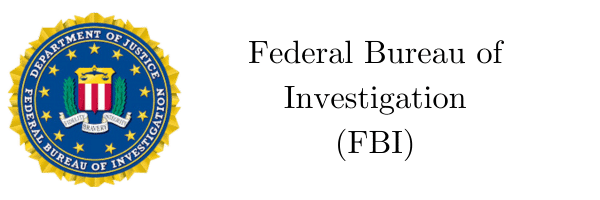

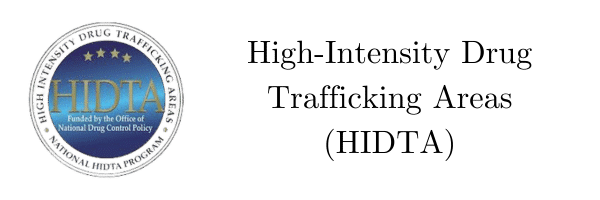


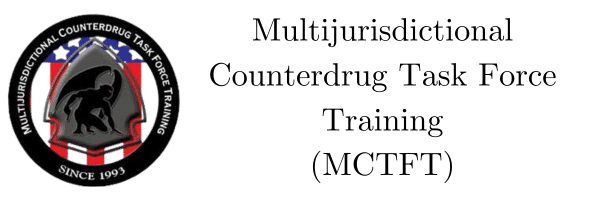
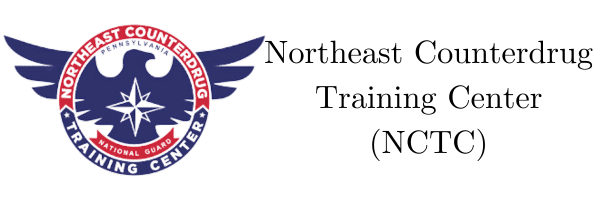



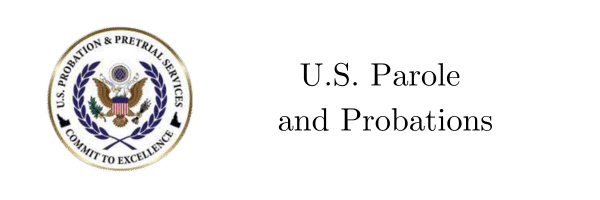
"I enjoyed the course immensely & have already profited from your insights." - FBI
"I have been to training classes all over the country and this ranks among the best class that I have attended." - US Dept of Justice
"...I attended the Reid training for three days and I got more out of Gary's training in three hours!" - Federal Law Enforcement Training Center - Senior Special Agent
"I have to say hands down this was the best 3 day class I have ever been a part of." - Baltimore City Police Department
"The result of your training has not only improved the investigator's ability to collect statements and obtain confessions but the interview time has been substantially reduced." - Virgin Island Inspector General
03
Forensic Statement Analysis (FSA)
|
"The increased knowledge of verbal and non-verbal communication, along with statement review, assisted in the completion of several investigations. In addition to the most significant crimes, our officers report an increase in drug related apprehensions, which resulted from traffic/pedestrian contacts."
Jefferson County Sheriff's Department
“. . . a person’s own words can be transposed into numbers and a simple mathematical equation can determine truth and deception for you.”
Forensic Statement Analysis (FSA) is a process by which a person’s own written or spoken words are scientifically analyzed to determine truth and deception. Given the opportunity a person’s words WILL betray them, in spite of their prior training, education and best efforts to avoid detection.
Select cases allow a person’s own words to be transposed into numeric values to determine a truthful balanced statement. Success lies in obtaining and preserving the statement in its purest form to avoid contamination. This is much like processing a crime scene.
Although this monumental discovery is still relatively unknown to many investigators, it is now actively taught and practiced all over the country by law enforcement and the military as well as private company investigators and others including Human Resources personnel.
Regardless of what business you are in, or what position you hold, whether you’re in the public sector, private sector, law enforcement, sales, education, security, administration, legal, medical, or even with a personal relationship, it is imperative that you know the truth about the person with whom you are dealing. This may well become the first tool you reach for in your arsenal when trying to determine if someone is attempting to deceive.
Let the person’s own words provide you with the information you need without the use of the more costly instruments such as the Polygraph and others. Successful and current users of FSA include: FBI, DEA, Sky Marshals, Homeland Security, state & local law enforcement, the military, school officials, private detectives, prosecuting attorneys, doctors, nurses, CEO’s, etc.
Detecting deception is no longer limited to the traditional means of interpreting body language or utilizing electronic polygraphs. Today we have advanced to analyzing a person’s own words to determine truth and/or deception..
Hand someone an ordinary object such as a pen and ask them to tell you any one thing about it. Tell them they must use the word “this” or the word “that” when describing the object. In the case of the pen for example they will most often describe a characteristic of the pen they are holding as: “This pen is blue . . .”
Perform a second test with the same or a different person utilizing similar directions of “this” or “that” except now hold the pen across the room from them. In In 99.9% of the cases, they will say “‘that’ pen is blue” instead of “this” pen.
The obvious results are: “this” shows closeness and “that” shows distance. How can this be utilized by an investigator? Suppose a person is describing a crime scene to you and they say “I walked in the room after hearing what sounded like a gunshot and saw ‘this’ little gun. The problem is the gun is 35 feet away. Why is the person saying “this” when they should be saying “that”. It might suggest that the person relates closely to the weapon because in fact they had it in their hand earlier. In addition, perhaps the reason it’s a “little” gun is because they unwittingly remember it being small compared to the size of their own hand.
Is this finding 100% guaranteed? Obviously not. However, if you were looking for suspects, would you consider eliminating this person just yet? Hopefully not!
A well-known politician recently said on national television “There are two people with me here tonight that are extremely important in my life.” Seated behind him were his mother and his wife. Both of them were the exact same distance from him. To the one, he pointed and said “this is my mother.” To the other, he pointed and said “that is my wife.”
Obviously he is unknowingly showing closeness to one (his mother), and distance to the other (his wife). Someone listening and analyzing closely will know the true meaning of what was said. In reality, he did feel closer to his mother and chose to distance himself from his wife because of their uncaring relationship that was later confirmed by actions of infidelity.
Success continues to be found in cases of theft, rape, robbery, homicides, threats, suicides, arson and assaults to name a few. A case in point involved a former Trooper found shot to death in an apparent suicide. With the aid of FSA the case was overturned and ruled a homicide.
The entire analysis is featured in the book “Where Murderers Walk Free” by Jerry C. Berry. FSA is the least intrusive form of investigation in any setting including the workplace.
Allow Law-Tech Consultants to analyze your case and statements to objectively determine truth and deception or to train you to do the same. Call today and let us show you how this can work for you. References and testimonials of those who are successfully utilizing these proven techniques every day are available upon request.
04
Detecting
Deception
|
"You hit a home run this morning. The feedback so far has been extremely complimentary. Congratulations."
Larry Glenn, Kaplan University
"I found your presentation to be excellent! In addition to being able to use your material during interviews, I think I will find it to be very helpful while conducting investigations into issues in the workplace such as harassment. Keep up the good work!"
Alesia Reese, Knouse Foods
Corporations, human resources, law enforcement, and military personnel.
Do you know anyone that doesn’t need to know the truth?
Historically the unique techniques of Detecting Deception have been reserved for law enforcement and military investigators. Today however we are reminded daily by reports of workplace violence, killing sprees, school shootings, thefts, bullying and harassments that the corporate world is equally in need of the same technology and training to help make more informed decisions.
Not only will it provide your managers, human resources and fellow employees with the ability to employ and work with more qualified personnel but the courts are ruling that it is necessary to provide a safe workplace environment for both your internal and external customers.
Law-Tech Consultants is dedicated to providing you that service by bringing the training and if you choose, private investigations to you, your workplace and employees. The learned techniques are “hands-on” and ready to work when you are. You will find them easy to learn and applicable in every situation by asking the right questions in a non-accusatory forum and then by simply evaluating their responses. Both oral and behavioral responses are used in conjunction with other safeguards to avoid common mistakes and to assure your assessment accuracy.
You owe it to yourself, staff and customers to take advantage of this training opportunity to assist you in every aspect of your business and in dealing with others who might not otherwise be one hundred percent truthful. This includes the valuable art of negotiating. It is time that you too take advantage of these long kept proven secrets as others do to assure your own continued success.
Why Choose Law-Tech for Your Law Enforcement Courses
Training On-Site
If a pre-existing class doesn’t work for you, opt for a personalized course from Law-Tech Consultants. You choose the curriculum, training, location, dates, and attendees. Get the same top-notch training, like lifetime consulting and personalized certificates of completion.
Passionate Coaches
The dedication Gary Sr. and Gary Jr. bring to the classroom is unparalleled – attendees have described their coaching as infectious and are anxious for more courses and seminars. Over 3 days, attendees will share the same excitement and engagement due to the personal nature Gary Sr. and Gary Jr. bring to every seminar for every organization.
Engaging Content
Our courses and seminars are not a drone – we use active examples to help pull attendees in and help showcase their understanding of the skills being taught. The goal is for the content and presentation to excite attendees so they can better apply what is being taught and see how they can use it every day on the job and in the field.
Positive Results
Our clients tell us it’s the real-world, in-the-field training and application that they hold the most valuable. The trial experience, investigation application, career boosts, and more all add value to law enforcement and business owners who want to expand their or their team’s knowledge for better confidence on the job.
The Benefits of a Law-Tech Certificate of Completion
If you want to advance your career, improve your skills in the field, and feel more confident walking into trial, our I&I and FSA training seminars can help. We’ve worked with the DEA, FBI, Border Patrol, and other high-end organizations because our applications and skill sets show real world results.
Advance Your Career
Solve More Cases
Trial Confidence
New Perspectives

Brought to you by Chase the Lyin'
Chase, the official lion mascot of Law-Tech Consultants to help you catch criminals


